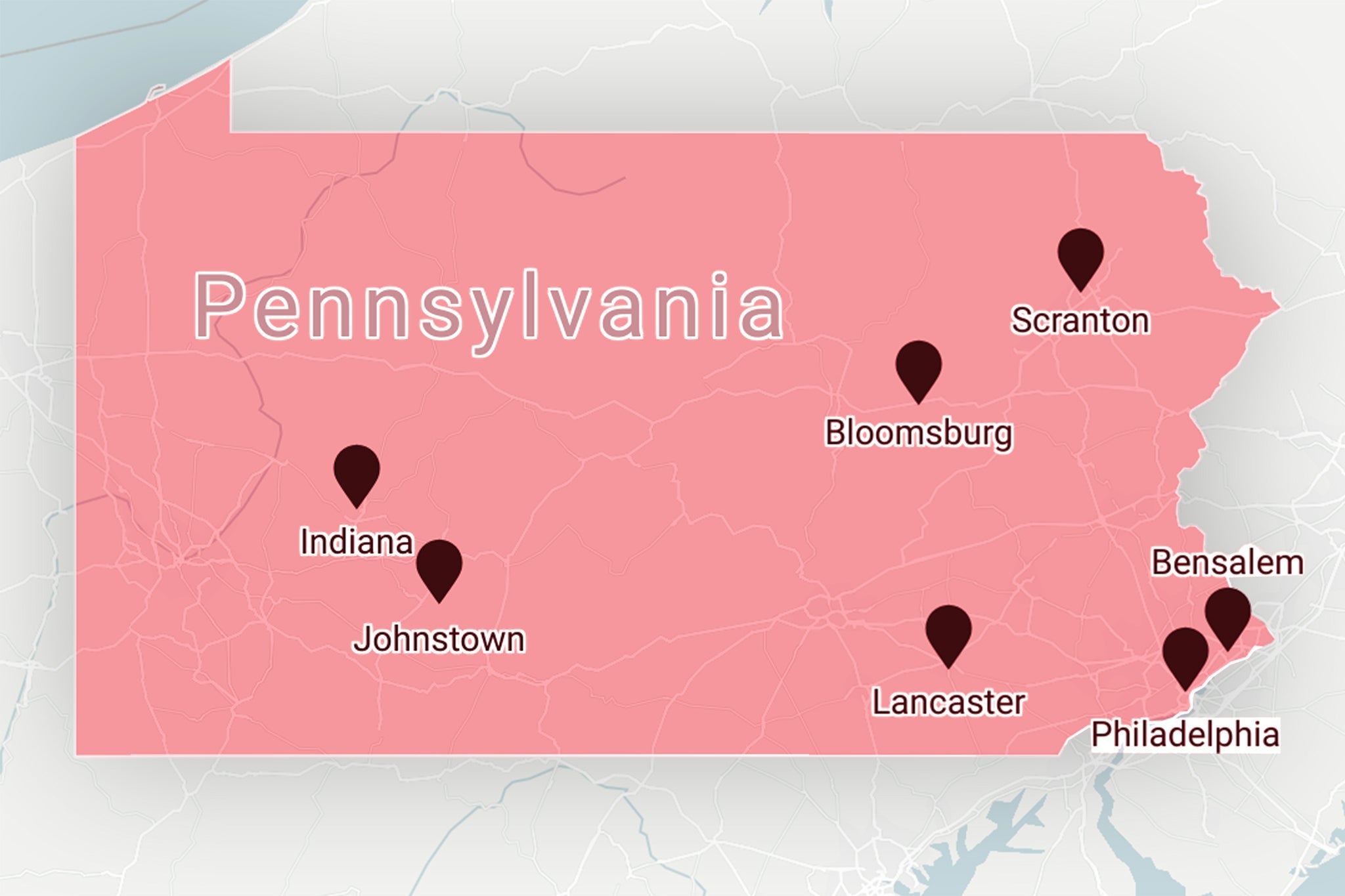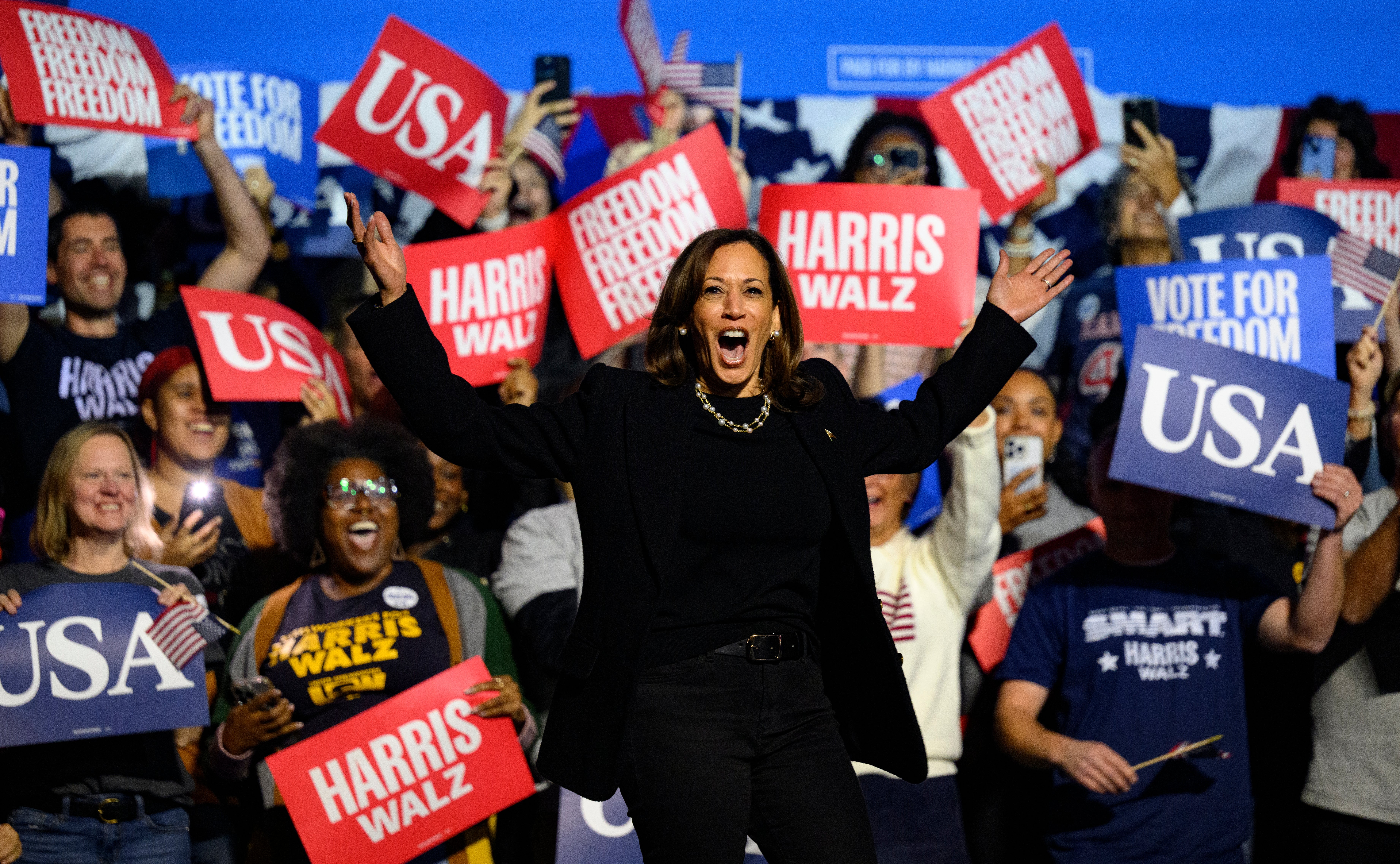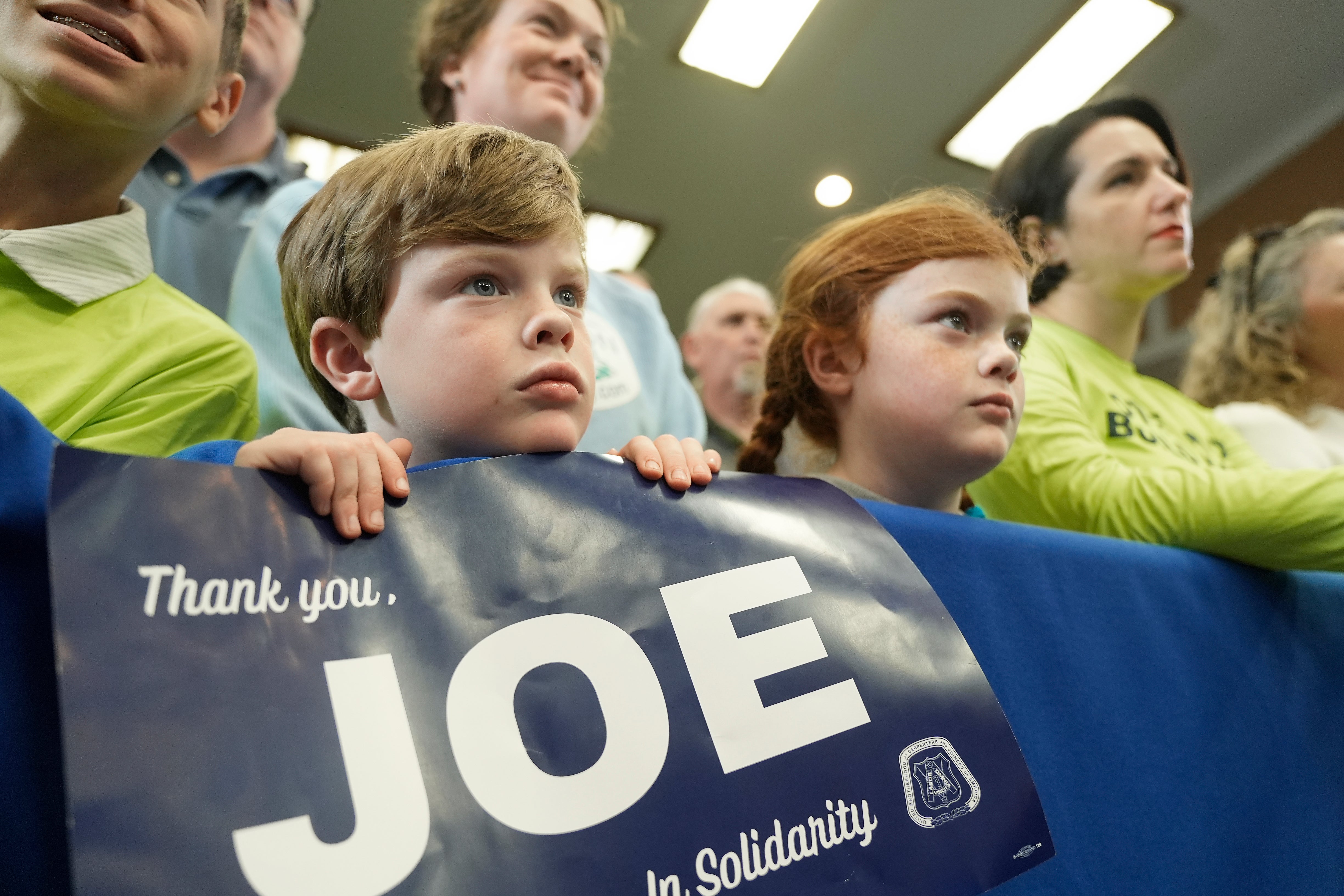
In the college town of Indiana, at the country fair in Bloomsburg, and in the former industrial boomtown of Scranton, the message was the same: working-class Pennsylvanians were struggling to get by.
As I traveled throughout the state during this presidential campaign, from Pittsburgh to Philadelphia and the rural stretches in between, inflation and pessimism about the economy were at the forefront of people’s minds.
It would prove to be the deciding factor in the crucial swing state, and across the country.
At a Donald Trump rally in September in Indiana, about 50 miles northeast of Pittsburgh, I was surprised by the huge number of young people turning out to see the former president. The concerns of young voters don’t always align with their elders, but they were worried about jobs and the price of gas just like everyone else.
“I’m scared for my future. I want my future economy to thrive,” Kelsey Moyer, a 20-year-old student at Indiana University, told me. “Both presidents have had a four-year span and you can see the difference in the country.”
Inside the arena — in between rants sending immigrants home — Trump promised the crowd he would put more money in their pockets.
“Vote Trump and your incomes will soar. Your net worth will skyrocket. Your energy costs and grocery prices will come tumbling down,” he promised, without giving any detail about how he would do so.
The next day I visited the Bloomsburg Fair, the state’s largest, an agricultural haven for farmers selling their goods and small business owners. Volunteers for Trump were in attendance, busy trying to drive up supporter numbers in the deep red rural area.

That’s where I met Kelly Stedge, a 54-year-old Pennsylvania business owner, who was volunteering for a political campaign for the first time. She got involved with the Trump campaign after having to close two of her retail stores selling home goods due to a drop in business, and was meeting others struggling just like her.
“We just want to make a modest living,” she told me. “People don’t have extra money to buy anything that’s not a necessity.”
Even Democrats in the state were sounding the alarm. When I met Paige Cognetti, the first woman mayor of Scranton, I arrived with questions about whether her historic victory might pave the way for Kamala Harris to win here too.
But she was frank about the challenge for the Harris campaign. Even as the economy was improving, and repairs were being made to public buildings across the city as a result of Biden’s infrastructure bill, inflation was the most important issue for voters.
“The other things are important, and we could spend all day talking about foreign policy and abortion and the Senate, everything, but people care if they can afford this cup of coffee and this breakfast sandwich,” she told me. “Can they afford to take their family off to breakfast on Sunday morning after church?”

Democrats were keen to point out that inflation had dropped from its peak of 9 per cent in 2022 to just 2.4 per cent in September. Unemployment is low and the stock market is booming, but the impact of inflation lingered. But even as the economy showed signs of improvement throughout the year, the impression most Pennsylvanians had of the Biden economy was set.
When the results came in, Trump gained ground uniformly across the state. Inflation was the unifying story — it crossed racial boundaries and carried through the suburbs and the rural areas.
Exit polls confirmed the economy was the top issue for Pennsylvanians. Some 31 per cent of voters in the state said it mattered most in deciding how to vote, according to an exit poll by Edison Research. The same poll found Trump winning 67 per cent of voters who thought the economy was in bad shape.
What appears definitive about Trump’s victory was how the economy had overridden, for many people, concerns about his racism, misogyny and crimes.
Meanwhile, only 15 per cent said abortion mattered most, undercutting a key message of Harris’s campaign, although it should be noted that abortion remains legal up to 24 weeks in the state so that may have been less of a motivating force for women Pennsylvanians.
It’s not that the Harris campaign didn’t realize the economy was important — many of her stops in the state were focused on her plans to cut inflation and price gouging — it’s that voters saw her as responsible for its dire state in the first place.
Harris took over at the top of the ticket partly because of Biden’s deep unpopularity, but as his vice president she could not campaign against him or his record.
Andrea Erickson, a 45-year-old nurse in the town of Bensalem, 20 miles north of Philadelphia, told me on Election Day that inflation and housing costs had convinced her to vote for Trump.
“I don’t feel like this last four years has gone well, and I don’t think I’ve heard much of a change from Harris,” she said.
The truth is that the Democrats’ problems in Pennsylvania pre-date Harris. Her loss here is the culmination of her party’s years-long drift away from working-class voters, especially in rural parts of the state.
Rural Pennsylvania is often disparagingly referred to as Pennsyltucky — a place that allegedly has more in common with Kentucky than it does with the urban areas of the state. People who live there are seen as more socially conservative and religious.
But despite their differences on social issues, the Democrats traditionally drew strength here from powerful unions in the steel mills and coal mines. As industry declined, so did the power of the unions. What was left was a socially conservative population who had less of an economic incentive to vote for socially liberal Democrats.
In my visits to Pennsylvania over the years that gap has only grown. In 2020, I spoke to coal miners who still supported Trump despite his unmet promises on the economy.

Coal production in the US in 2019 sank to its lowest level since 1978. Mining jobs decreased by nearly 10 per cent during Trump’s first term, and there were more mine closures during the president’s first two years than there were in Barack Obama’s entire first term. But still Trump promised the jobs would return.
“I believe it’ll all come back if Trump is re-elected. In my opinion, he has to be re-elected. I mean, if he’s not, I’m doomed,” Dave Hathaway, a miner from nearby Waynesburg, told me in 2020.
Biden’s victory in Pennsylvania in 2020 now looks more like a blip than a return to the fold. Together with Trump’s disastrous handling of the pandemic, he was uniquely placed to win here with his own story of growing up in Scranton, where his father struggled to find work and eventually had to move the family out of the state. He spoke of it often on the campaign trail, both as a way of distinguishing himself from his opponent and connecting to working-class voters.

In 2020, I watched him speak in Johnstown, out in western Pennsylvania, at the end of a Rust Belt train tour. His message was finely honed for white working-class voters who had left the Democratic Party for Trump in 2016.
“Everyone is just looking for a chance — not a guarantee — just an equal shot to get ahead,” Biden said that night. “That dream is getting further and further out of reach. That’s what I’ve seen today at every stop on that train.”
That message resonated then, and again in this election. Rightly or wrongly, voters trusted Trump to deliver on that dream.







